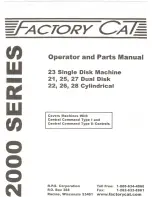
Open the plastic cap and collect water into the water
tank. Only add water to the wiping container after
removing the container from the vacuum cleaner.
A slight leak of residual water may occur when handling
the water tank. In this case, wipe the spilled area
immediately with a dry cloth.
We recommend wiping the floor with clean water, as the
detergent may cause foaming and make the water drip
onto the mop or cause smudges on the floor after it has
dried.
Carefully insert the water tank into the body of the
robotic vacuum cleaner. Do not spill the robotic vacuum
cleaner or its internal part with water; the vacuum
cleaner is not waterproof.
Connect it to the charging station. For best results when
wiping with water, we recommend using this function in
one room and then moving to another room.
Press the button
on the remote control to wipe with water. In this mode, vacuuming is off, only
the side scrub brushes and the main center brush work. Do not leave the robotic vacuum cleaner
unnecessarily stationary or with water residue in the water tank.
Do not use wet wiping on the carpet.
Keep enough water in the water tank for wiping.
Always remove the water tank after wiping, rinse and dry the mop cloth.
For safety reasons, do not charge the battery with the water tank inserted.
DRY MOP WIPING
It is used to remove fine dust and polish the floor, always use a dry mop cloth.
Do not use the microfiber mop to wipe on carpets and uneven surfaces.
MAINTENANCE
ATTENTION! Regular maintenance is recommended for the most efficient cleaning.
LACK OF MAINTENANCE MAY CAUSE DAMAGE TO THE ROBOTIC VACUUM CLEANER AND
LOSS OF WARRANTY.
Before carrying out cleaning and maintenance work, switch off the robotic vacuum cleaner with the
„Main power switch (3)“. Wipe the top cover of the robotic vacuum cleaner with a soft dry or slightly
moistened cloth. Do not use cleaning agents to clean the surface of the robotic vacuum cleaner as this
may damage the surface.
Summary of Contents for RoboStar iQ300
Page 1: ...TESLA RoboStar iQ300 ...








































